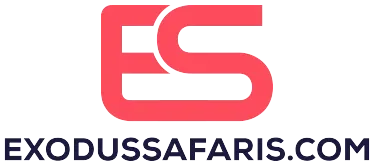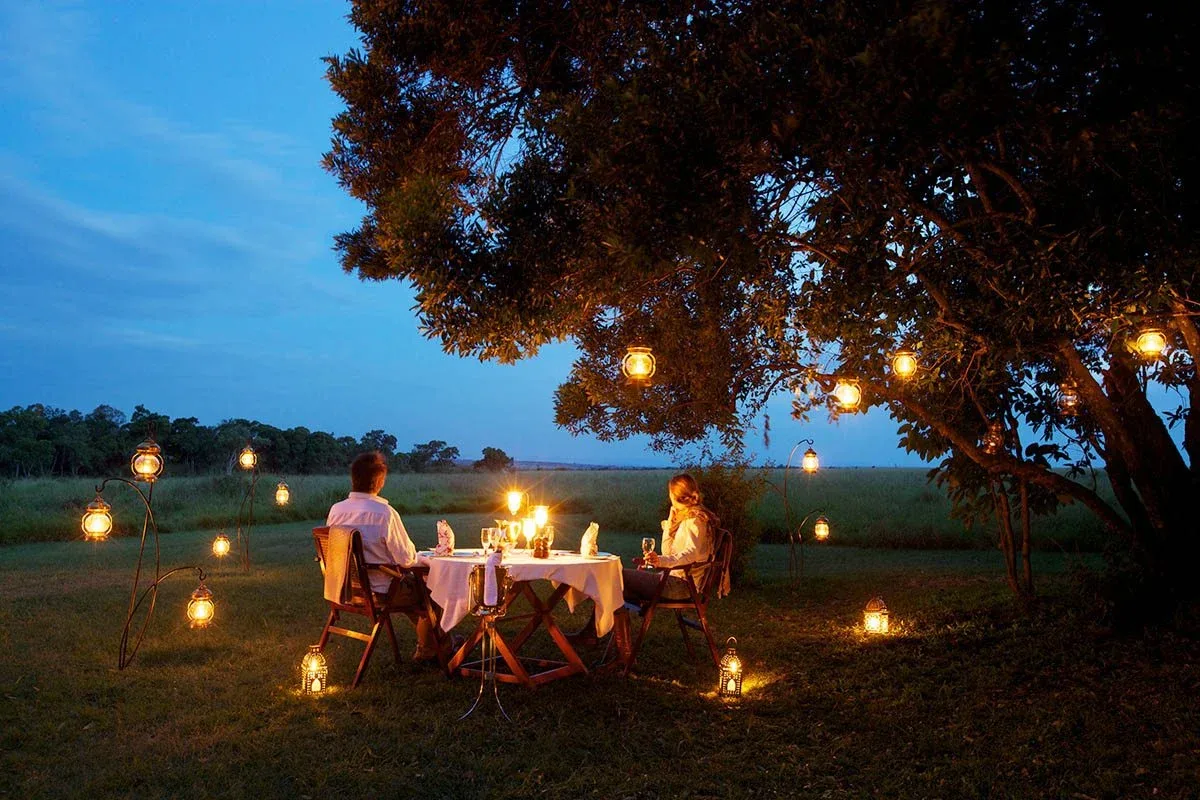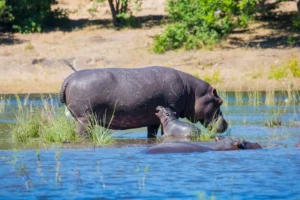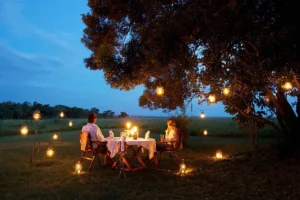Discover the best tourist attractions and places to visit in Zambia, from the iconic Victoria Falls to the wildlife-rich South Luangwa National Park and vibrant markets of Lusaka. Embark on a journey through Zambia’s diverse landscapes and cultural heritage
Zambia, a landlocked country in Southern Africa, boasts an array of captivating tourist attractions and natural wonders that appeal to adventurers and nature enthusiasts alike. From the thundering Victoria Falls to the vast plains teeming with wildlife in South Luangwa National Park, Zambia offers an unforgettable safari experience. Cultural heritage sites like the vibrant markets of Lusaka and the ancient rock paintings of Chongoni add depth to Zambia’s tourism appeal. Whether you seek adrenaline-pumping adventures or serene encounters with nature, Zambia promises an enriching journey through its diverse landscapes and rich cultural tapestry.
Victoria Falls
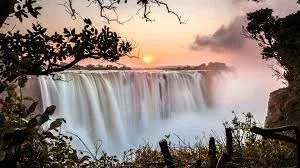
Victoria Falls, known locally as Mosi-oa-Tunya, is one of the most spectacular natural wonders in the world. Spanning the Zambezi River on the border between Zambia and Zimbabwe, it is renowned for its awe-inspiring size and power. The falls plummet into a deep gorge, creating a constant mist that can be seen and heard from miles away, hence its local name, “the smoke that thunders.”
Visitors to Victoria Falls can experience its grandeur from various viewpoints, each offering breathtaking perspectives of the cascading water. The area around the falls is rich in biodiversity, with lush rainforest and diverse wildlife, making it a haven for nature enthusiasts. Activities abound, from scenic walks and hikes along the gorge to thrilling experiences such as bungee jumping and white-water rafting in the Zambezi River below.
The town of Livingstone in Zambia and Victoria Falls Town in Zimbabwe serve as gateways to this natural wonder, offering a range of accommodations, restaurants, and tour services to cater to travelers exploring this iconic destination.
South Luangwa National Park
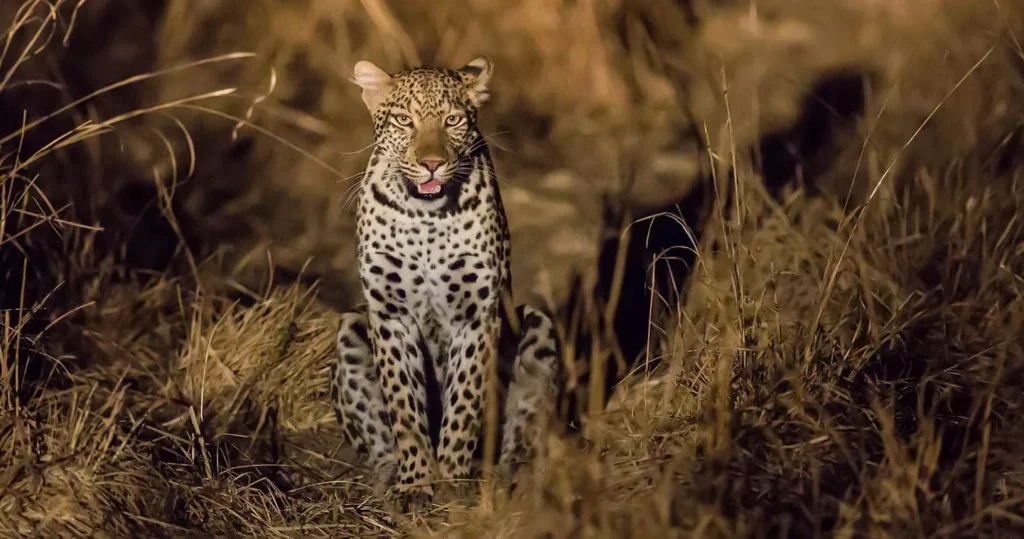
South Luangwa National Park, nestled in the eastern part of Zambia, is renowned for its exceptional wildlife viewing opportunities and rich biodiversity. Home to a diverse array of animals, including elephants, lions, leopards, and giraffes, it offers visitors a chance to witness these magnificent creatures in their natural habitat. The park is particularly famed for its high concentration of leopards, making it a prime destination for wildlife enthusiasts and photographers alike.
Birdwatching enthusiasts will also find South Luangwa National Park a paradise, with over 400 species of birds recorded here. The varied habitats, from woodlands to riverbanks, attract a plethora of avian species, including raptors, waterbirds, and colorful songbirds. It’s an ideal spot for both seasoned birders seeking new sightings and casual observers interested in the vibrant birdlife of Africa.
Designated as a UNESCO World Heritage Site in 1982, South Luangwa National Park is recognized for its outstanding natural beauty and ecological significance. Visitors can explore the park through guided game drives, walking safaris, or even night drives, offering unique opportunities to observe nocturnal wildlife. Lodges and camps within the park provide comfortable accommodations, ensuring a memorable safari experience immersed in the wilderness of Zambia..
Lower Zambezi National Park
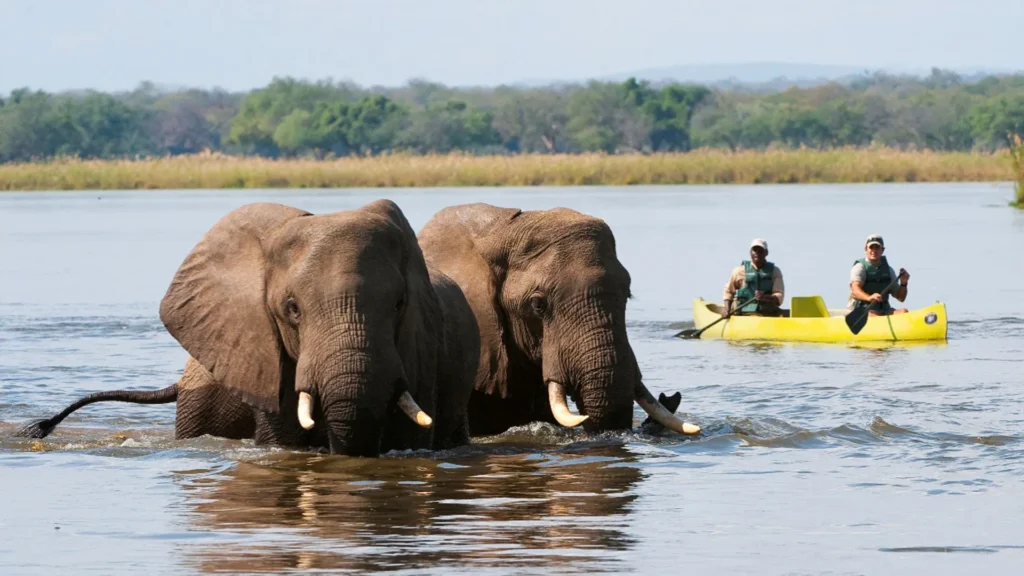
Lower Zambezi National Park is the second largest game reserve in Zambia and a UNESCO World Heritage Site. The park covers an area of approximately 3,900 square kilometers and is home to various animals and birds. It’s also one of the best places for bird watching in Africa!
The Lower Zambezi National Park can be accessed by road from Livingstone or Lusaka, but no roads exist. Instead, it is primarily accessed by boat along the Zambezi River or by light aircraft from Lusaka International Airport.
The park has a wide variety of habitats, including floodplains, riverine forests, plains and woodlands that make it a haven for wildlife such as zebra, buffalo, wildebeest, and hippos – one-quarter of which live here!
Livingstone Island

Livingstone Island, situated on the Zambezi River just upstream from Victoria Falls, offers a unique and exhilarating experience for visitors to Zambia. This small island is renowned as the only place where you can swim in the Zambezi River, creating a thrilling adventure amid the majestic setting of the falls.
The island provides an unparalleled vantage point to witness the awe-inspiring Victoria Falls up close. Visitors can marvel at the sheer power and beauty of the falls as they cascade down the gorge, creating a spectacular display of mist and rainbows. One of the best times to visit Livingstone Island is during sunset, when the golden hues of the setting sun illuminate both sides of Victoria Falls, casting a magical glow over the landscape.
Swimming in the Zambezi River at Livingstone Island offers a once-in-a-lifetime opportunity to feel the rush of the river’s currents while surrounded by breathtaking natural beauty. The experience is guided and safely managed, ensuring that visitors can enjoy this exhilarating activity in a controlled environment.
Access to Livingstone Island is typically via guided tours that depart from Livingstone town in Zambia. These tours often include informative guides who provide insights into the island’s history, geology, and wildlife. It’s advisable to book in advance, especially during peak tourist seasons, to secure your spot for this unforgettable adventure at Livingstone Island.
Mosi-oa-Tunya National Park

Mosi-oa-Tunya National Park, situated in the northwestern part of Zambia, is a renowned destination celebrated for its iconic centerpiece, Victoria Falls. As one of the most visited tourist attractions in Zambia, the park offers a breathtaking natural spectacle that attracts visitors from all over the world.
Victoria Falls, locally known as Mosi-oa-Tunya (“the smoke that thunders”), is one of the world’s largest waterfalls by width and is a UNESCO World Heritage Site. The sheer volume of water cascading down the Zambezi River creates a mesmerizing display of mist and thunderous roars, visible from various viewpoints within the park.
Apart from Victoria Falls, Mosi-oa-Tunya National Park is also home to diverse wildlife and ecosystems. Visitors can explore the park on guided tours to spot wildlife such as elephants, hippos, crocodiles, and a variety of bird species. The park’s riverine and woodland habitats provide excellent opportunities for birdwatching and nature walks, offering a serene contrast to the thundering falls.
Activities at Mosi-oa-Tunya National Park include guided walks, boat cruises along the Zambezi River, and cultural experiences that showcase the rich history and traditions of the local communities. The park’s proximity to Livingstone town and its well-developed tourism infrastructure make it easily accessible for travelers seeking an unforgettable experience in Zambia.
Whether you’re captivated by the raw power of Victoria Falls or intrigued by the park’s natural and cultural heritage, Mosi-oa-Tunya National Park promises an enriching adventure and remains a top choice for travelers exploring Zambia’s remarkable landscapes.
Kafue National Park

Kafue National Park, located in western Zambia, stands as one of the largest and oldest national parks in Africa, covering an expansive area that showcases diverse wildlife and stunning landscapes. Spanning over 22,400 square kilometers, Kafue National Park offers visitors unparalleled opportunities to encounter a rich array of fauna and flora in their natural habitats.
The park’s diverse habitats range from vast grassy plains to miombo woodlands, riverine forests, and seasonal floodplains, creating ideal conditions for a wide variety of wildlife species. Among its prominent residents are the African buffalo, elephants, lions, and leopards, which roam freely across the park’s varied terrain. Kafue is particularly renowned for its large prides of lions and the elusive leopards that inhabit its dense woodlands.
One of the park’s standout features is its significant population of hippopotamuses, with Kafue boasting the world’s largest concentration of these semi-aquatic mammals. The abundance of water bodies, including the Kafue River and its tributaries, provides essential habitat for hippos, crocodiles, and diverse birdlife, making it a haven for wildlife enthusiasts and birdwatchers alike.
Visitors to Kafue National Park can enjoy a range of activities designed to explore its natural wonders, including game drives, guided walking safaris, and boat cruises along the river channels. The park offers exceptional game viewing opportunities throughout the year, with sightings of antelope species such as puku, roan, and sable antelopes adding to the park’s allure.
Accommodation options within Kafue National Park cater to various preferences, from luxurious safari lodges and tented camps offering comfort amidst the wilderness to more rustic bush camps that provide an authentic safari experience under the starlit African skies.
With its vast expanse and remarkable biodiversity, Kafue National Park stands as a prime destination for those seeking an immersive wildlife experience in Zambia, offering unparalleled encounters with some of Africa’s most iconic species in their natural habitats.
Devil’s Pool

One of the most picturesque places in Zambia is Devil’s Pool. Located within the Lower Zambezi National Park, this naturally-formed Pool at the edge of the river is surrounded by beautiful scenery and dense vegetation. While it may look like a place you would want to stay away from, there’s more than meets the eye with this spot.
Devil’s Pool has powerful currents and deep water that can easily take you down if you aren’t careful or don’t know what you’re doing. It’s recommended for experienced swimmers only! The best part about this place is that when you get out of the water, there are always monkeys hanging out nearby, waiting for some food from visitors or keepers who work at this park!
Petauke District- Bwabwata National Park

Petauke District, situated in the northeastern part of Zambia, encompasses diverse landscapes and is bordered by several other districts, each contributing to its rich cultural and natural heritage. The district’s administrative center is located in the town of Petauke, which serves as a hub for both administrative functions and local commerce.
Geographically, Petauke District shares its borders with notable regions. To the north and east, it extends towards the border with the Democratic Republic of Congo, highlighting its strategic location within Zambia. To the south, it neighbors the Mongu District, while to the southeast lies Kasama District and to the southwest, Lundazi District. Towards its western edge, Petauke District touches upon Kafue District, showcasing its expansive reach and regional significance.
Within the boundaries of Petauke District lies the Bwabwata National Park, a vital conservation area known for its diverse wildlife and natural beauty. Bwabwata National Park spans across vast expanses of wilderness, encompassing various ecosystems such as woodlands, wetlands, and savannahs. This park is renowned for its abundant wildlife, including elephants, hippos, crocodiles, and numerous bird species, offering visitors exceptional opportunities for wildlife viewing and birdwatching.
The district’s proximity to Bwabwata National Park makes it an ideal destination for nature enthusiasts and adventurers seeking to explore Zambia’s natural wonders. Visitors to Petauke District can also immerse themselves in the local culture, experiencing traditional customs and interacting with communities that have thrived in harmony with their natural surroundings for generations.
Petauke District’s strategic location, coupled with its natural beauty and cultural richness, makes it a compelling destination for travelers seeking an authentic Zambian experience amidst stunning landscapes and abundant wildlife.
Liuwa Plain National Park
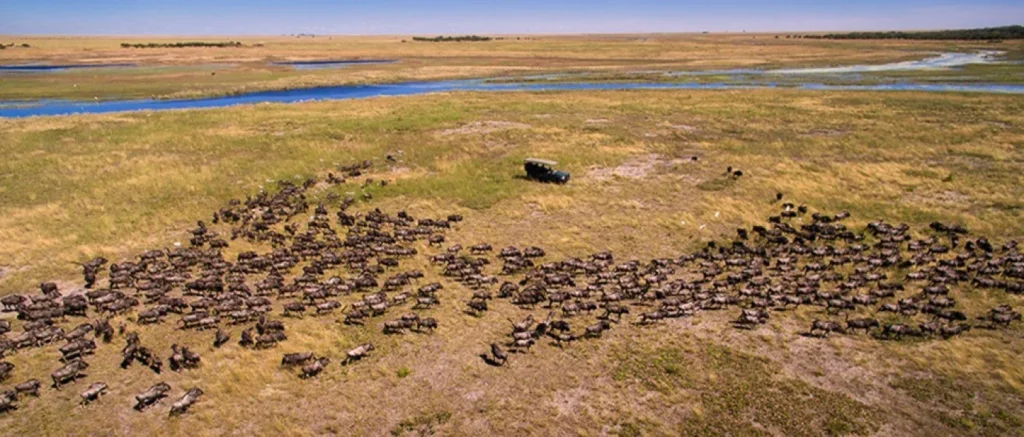
Liuwa Plain National Park, situated in the heart of the Luangwa River Basin in Zambia, is a pristine and expansive protected area renowned for its natural beauty and wildlife diversity. Spanning approximately 2,600 square kilometers (1,000 square miles), this national park offers visitors a unique opportunity to explore its vast plains and witness its rich ecosystem.
Located at an altitude of around 1,600 meters (5,249 feet) above sea level, Liuwa Plain National Park boasts a diverse landscape characterized by open grasslands, seasonal floodplains, and woodlands. This varied terrain supports a wide array of wildlife species, making it a haven for both resident and migratory animals throughout the year.
One of the park’s most notable features is its role as a critical habitat for the annual migration of wildebeest. During the rainy season, thousands of wildebeest migrate to Liuwa Plain in search of fresh grazing grounds, creating a spectacular wildlife spectacle that draws visitors from around the world.
Liuwa Plain National Park is also renowned for its significant conservation efforts, particularly in the protection of endangered species and the preservation of natural habitats. The park’s designation as a game reserve dates back to 1964, underscoring its long-standing commitment to wildlife conservation and sustainable tourism practices.
Visitors to Liuwa Plain National Park can enjoy a range of activities designed to showcase its natural wonders and wildlife diversity. Game drives offer the opportunity to encounter large herds of wildebeest, as well as other iconic species such as zebra, red lechwe, and buffalo. Birdwatchers will delight in the park’s rich avian population, which includes numerous species of waterfowl and birds of prey.
For those seeking a deeper immersion into the park’s wilderness, guided walking safaris provide a chance to explore the landscape on foot, accompanied by experienced guides who share insights into the park’s ecology and wildlife behavior.
In addition to its natural attractions, Liuwa Plain National Park offers visitors a tranquil and remote wilderness experience, far from the crowds often associated with more popular safari destinations. The park’s remote location and pristine environment make it an ideal destination for travelers seeking an authentic African safari adventure in a truly wild and untouched landscape.
Overall, Liuwa Plain National Park stands as a testament to Zambia’s commitment to conservation and sustainable tourism, offering visitors an unforgettable opportunity to connect with nature and experience the beauty of one of Africa’s last remaining wilderness areas.
North Luangwa National Park

North Luangwa National Park, situated in Northern Zambia, is a premier destination renowned for its spectacular wildlife and pristine wilderness. Covering an expansive area, the park offers visitors a rare opportunity to explore a diverse ecosystem teeming with iconic African wildlife.
The park is particularly celebrated for its abundance of wildlife, including large populations of hippos, elephants, and lions. Visitors can witness these magnificent creatures in their natural habitat, roaming freely across the park’s varied landscape. North Luangwa National Park is also home to a rich diversity of bird species, making it a paradise for birdwatchers eager to spot endemic and migratory birds.
In addition to its impressive wildlife, the park boasts a stunning array of vegetation, from lush riverine forests to expansive grasslands dotted with iconic baobab trees. These majestic trees, known for their large size and distinctive appearance, add to the park’s scenic beauty and provide essential habitat for various wildlife species.
North Luangwa National Park holds special significance as a UNESCO World Heritage Site, recognized for its exceptional natural beauty, biodiversity, and cultural importance. The park’s designation underscores its critical role in conservation efforts and its value as a center for environmental education and sustainable tourism practices.
Visitors to North Luangwa National Park can explore its wonders through a range of activities designed to immerse them in the park’s natural splendor. Game drives offer the opportunity to encounter wildlife up close, with expert guides providing insights into the behavior and ecology of the park’s inhabitants. Walking safaris provide a more intimate experience, allowing visitors to explore the bush on foot and appreciate the smaller details of the park’s ecosystem.
For those seeking a deeper connection with nature, North Luangwa National Park offers overnight bush camps and lodges, where guests can experience the sights and sounds of the African wilderness under the starlit sky. These accommodations provide comfortable amenities while maintaining a sense of remoteness and adventure.
Access to North Luangwa National Park is facilitated through the main entrance gate located approximately 6 kilometers from Mfuwe town. Accommodation options in Mfuwe cater to visitors looking to stay near the park entrance before embarking on safari adventures deeper into the bush. It’s important to note that all vehicles must return to their accommodations before sunset, ensuring the safety of visitors and respecting the park’s regulations.
Overall, North Luangwa National Park stands as a testament to Zambia’s commitment to wildlife conservation and sustainable tourism. Its breathtaking landscapes, diverse wildlife, and UNESCO recognition make it a must-visit destination for nature enthusiasts and adventurers seeking an authentic African safari experience.
Conclusion
Zambia, with its rich tapestry of natural wonders and cultural heritage, offers an unparalleled array of tourist attractions and places to visit. From the awe-inspiring Victoria Falls, aptly named “the smoke that thunders,” to the diverse wildlife sanctuaries like South Luangwa National Park and Kafue National Park, Zambia beckons travelers seeking adventure, exploration, and an authentic African experience.
Beyond its iconic landscapes and abundant wildlife, Zambia’s cultural treasures, such as Livingstone Island and the vibrant local markets, provide glimpses into its fascinating history and traditions. The country’s commitment to conservation, highlighted by UNESCO World Heritage Sites like Mosi-oa-Tunya National Park and North Luangwa National Park, underscores its dedication to preserving its natural and cultural heritage for future generations.
Whether exploring the Zambezi River, embarking on a safari to spot elephants and lions, or delving into local communities, Zambia captivates visitors with its warmth, diversity, and the enduring allure of its untouched wilderness. For those seeking adventure, relaxation, or a deeper connection with nature, Zambia’s best tourist attractions offer endless possibilities and memories that resonate long after the journey ends.
